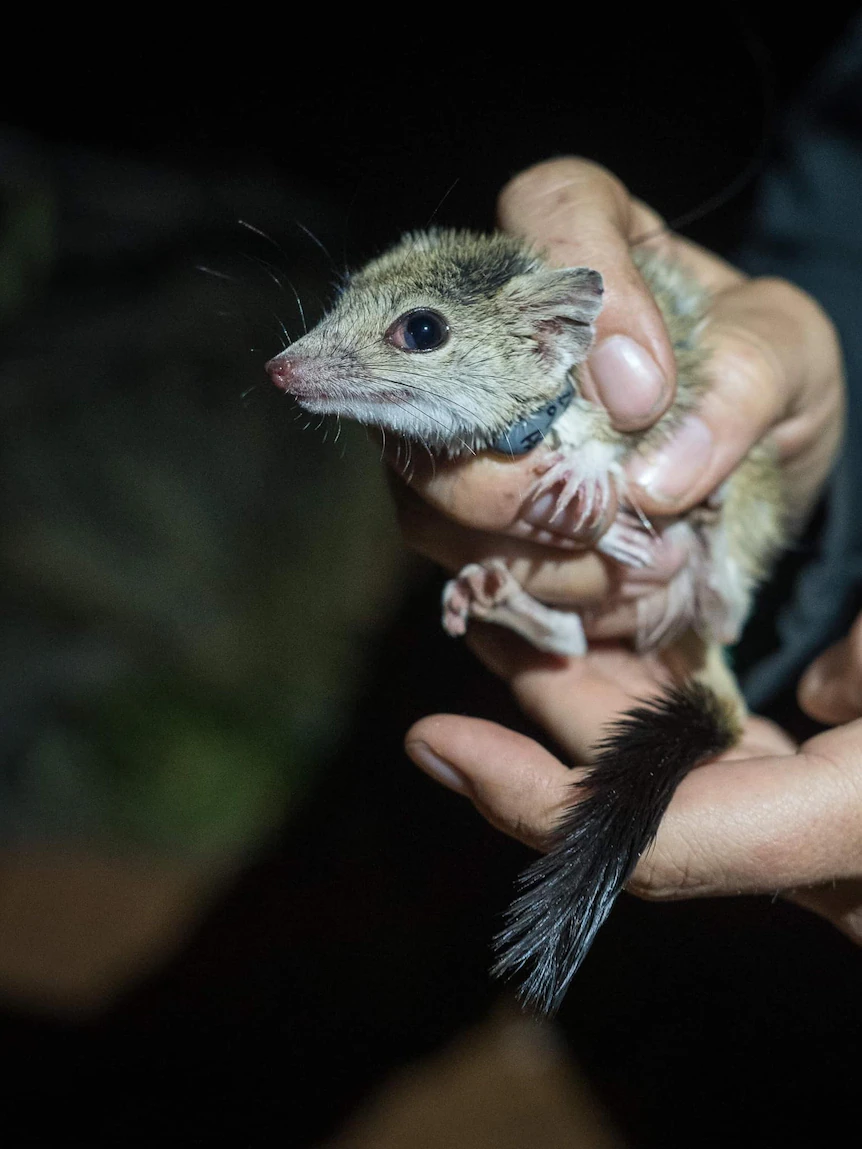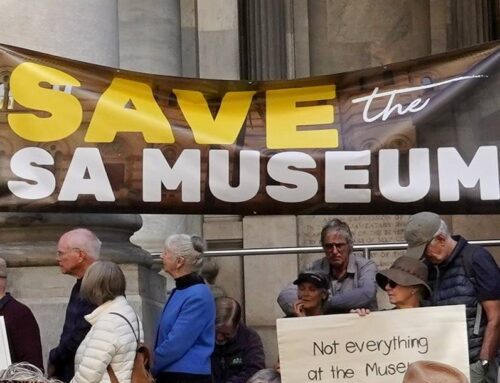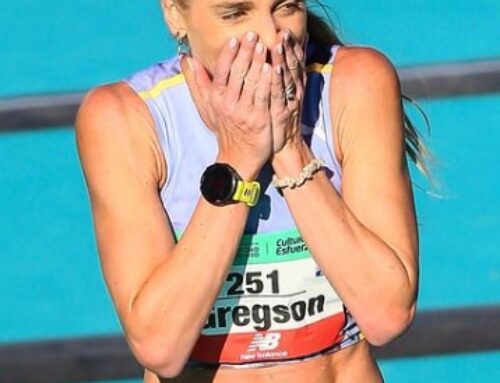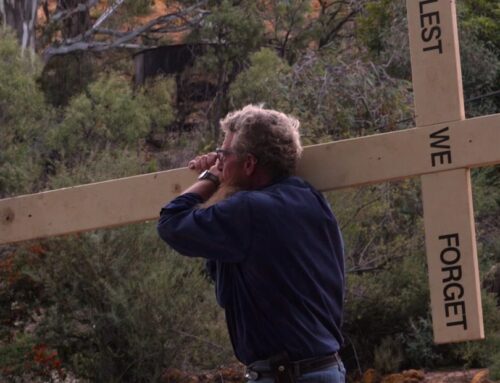An endangered marsupial on the brink of extinction has been given a chance to survive inside a predator-free zone near Andamooka Station in outback South Australia.
The Arid Recovery team — an independent not-for-profit group that runs a wildlife reserve in the state’s north — has translocated 12 kowaris from the Birdsville Track and released them into a fenced reserve near the station.
Key points:
- Most of the females that were translocated are carrying pouch young
- There is a one in five chance kowaris could become extinct within the next 20 years
- The kowaris were released into a reserve that is protected from cats and foxes
The kowari is a nocturnal carnivorous marsupial that is only located in stony-desert parts of South Australia and Western Queensland.
Kowaris living around the Birdsville Track have been breeding well due to the good rainfall in the past year, which has made it possible for the Arid Recovery team to translocate a dozen kowaris without impacting their population.
The native marsupials were placed into special transport cages and flown in a light plane to Arid Recovery’s reserve.
Extinction prevention
Arid Recovery chief executive Katherine Tuft said it was possible the kowari could become extinct within the next 20 years.
“There’s a one-in-five chance of that happening and that’s why our trans-location has come in as an action to help this species,” Dr Tuft said.
“We released the kowaris into our fenced reserve where we have 12,000 hectares that’s cat and fox-free.
“This species is most likely susceptible to cats and foxes because they’re just the right size for them to eat.”
“By putting them in our fenced reserve, we’ll eliminate that threat acting on them and we hope that it will act as an insurance for the population and hopefully one day we’ll have enough animals to send back into the wild.”
A new generation on the way
Each kowari has been fitted with a radio transmitter and placed into a soft-release pen inside the reserve that is about 20 square metres in size.
“We’re feeding them in there for a few days just to let them settle and then we’ll allow them to disperse out naturally at their own accord,” Dr Tuft said.
“We watched them with thermal binoculars, and we were able to see them exploring their pens, digging holes and doing what good kowaris do,” she said.
Dr Tuft said Arid Recovery hoped the kowaris would breed two more generations in the next 12 to 18 months.
“They’re actually breeding already,” Dr Tuft said.
“Most of the females we brought over are already carrying tiny pouch young which are the size of a miniature grain of rice.
“There’s a new generation transported with them already, which gives us some great genetic diversity,” she said.
Posted , updated





